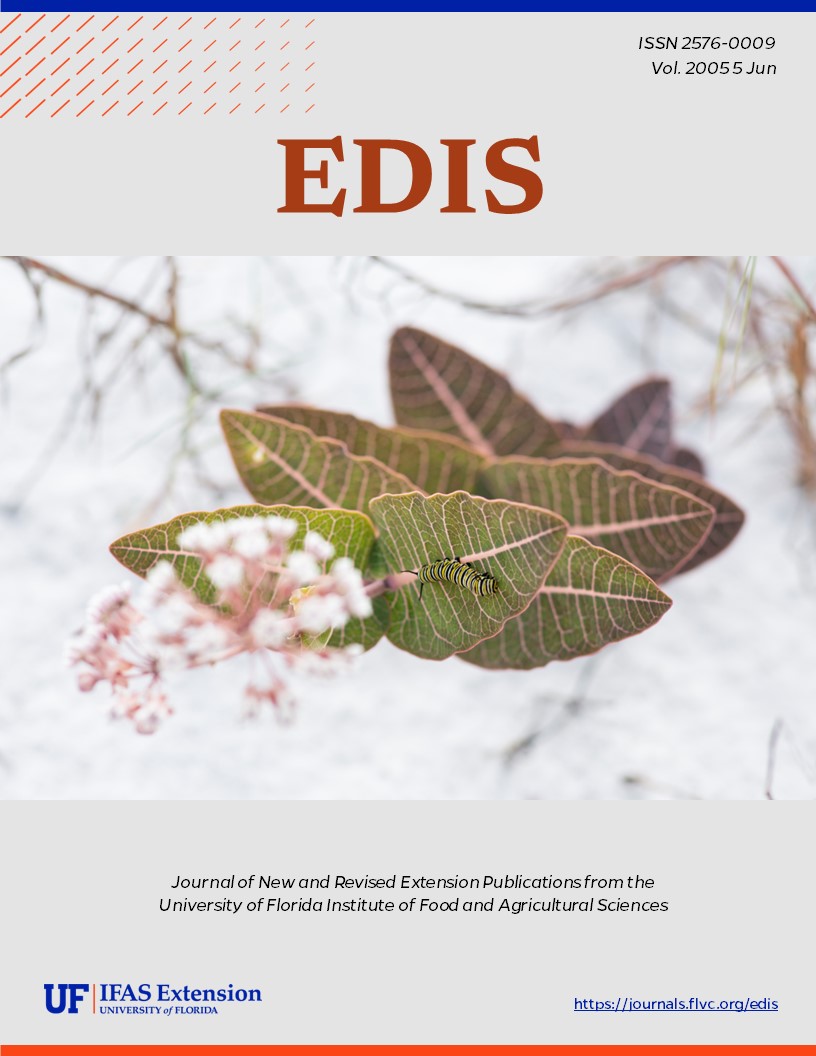Resumen
This thrips was described by Bouché in 1833 from specimens taken from a greenhouse in Europe as Thrips haemorrhoidalis. Packard described this species for the first time from this country in 1870 and called it the greenhouse thrips. This thrips appears in the Common Names of Insects approved by the Entomological Society of America as the greenhouse thrips, Heliothrips haemorrhoidalis (Bouché). This document is EENY-075 (originally published as DPI Entomology Circular No. 64), one of a series of Featured Creatures from the Entomology and Nematology Department, Florida Cooperative Extension Service, Institute of Food and Agricultural Sciences, University of Florida. Published: February 1999. Revised: August 2004.
Citas
Anonymous. (2003). Greenhouse thrips. How to Manage Pests: UC Pest Management Guidelines. http://axp.ipm.ucdavis.edu/PMG/r107301811.html (18 August 2004).
Funderburk J, Stavisky J, Olson S, Momol T. (2000). Thrips biology and management. http://thrips.ifas.ufl.edu/Background.htm (17 August 2004).
Short, DE,Mizell RF, and Fasulo TR. (1998). Woodybug: A knowledgebase of pest and beneficial arthropods of Florida woody ornamentals. UF/IFAS. SW-119.
Stansly PA, Childers CC, Nigg HN, Simpson SE. (2003). Florida Citrus Pest Management Guide: plant bugs, chewing insect pests, Caribbean fruit fly, and thrips. http://edis.ifas.ufl.edu/CG005 (18 August 2004).

